Posted on Oct 14, 2023
This is my first fieldwork experience with Dynastes grantii, specifically focusing on the Sky Islands.
On the first day, I drove from College Station to Fort Davis and camped there. Fort Davis is a small town that I really like. It only has one gas station and one grocery store. I camped at Fort Davis State Park, and that night, I set up a light sheet and caught some beetles. It was a bit late in the season for Chrysina spp., but I still found one of my favorites, C. woodii. You can only find C. woodii in West Texas, and compared to other existing species in the U.S., C. woodii has a relatively large body size. What’s special about them is their neon green color with blue tips on their legs.
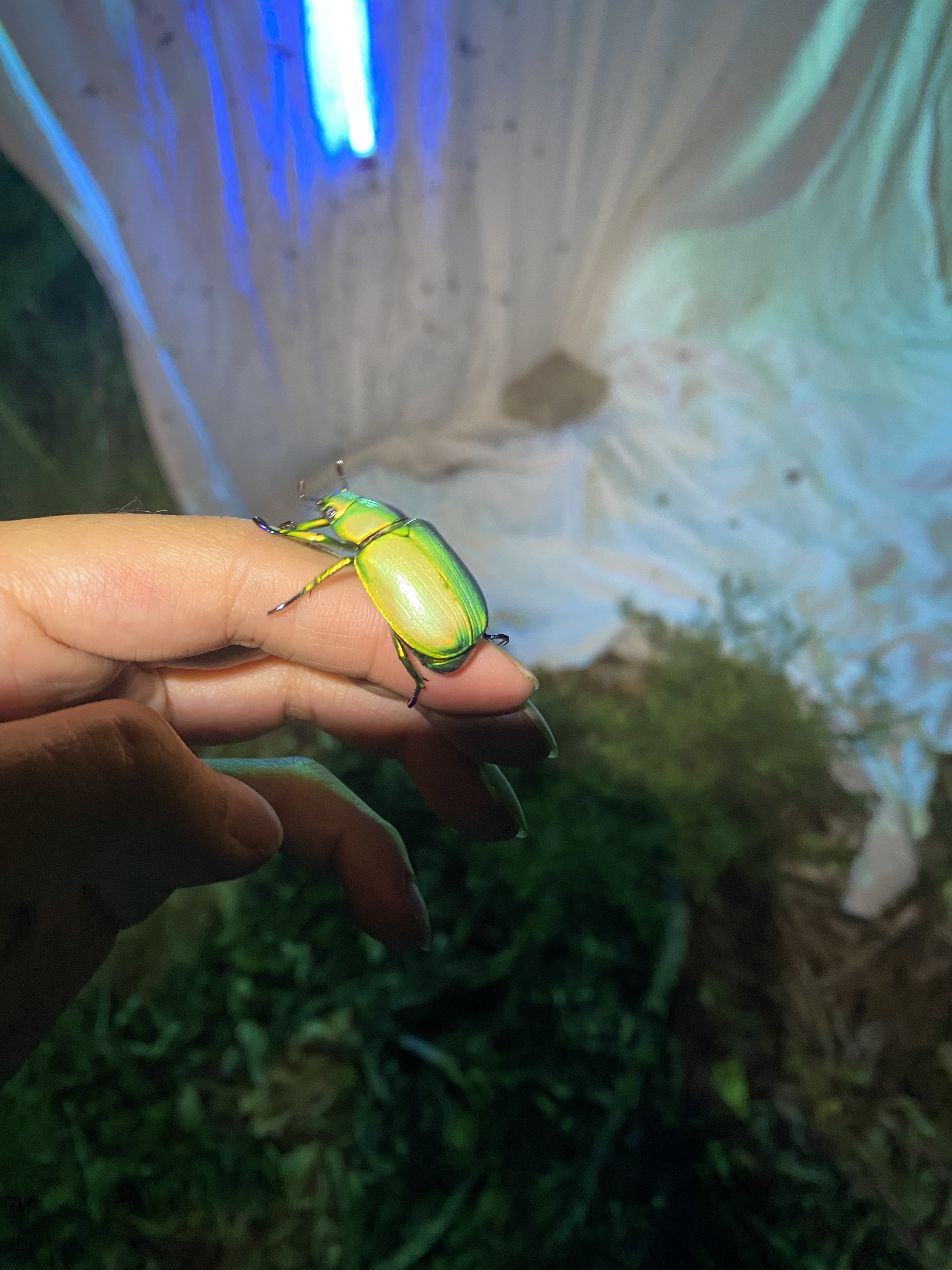
On the second day, I drove all the way to Portal, AZ. I camped in the Chiricahua Mountains and found some dispersed camping areas, so I set up my tent and light sheet. Around 9 PM, I heard a very loud wing noise—like a helicopter. I knew it was Dynastes, so I turned around and saw a female just landing on a tree, maybe 10–15 ft high. This was the first wild D. grantii I had ever seen, and it was for my research, so I climbed the tree and grabbed her. That was the only one I caught on the first night.
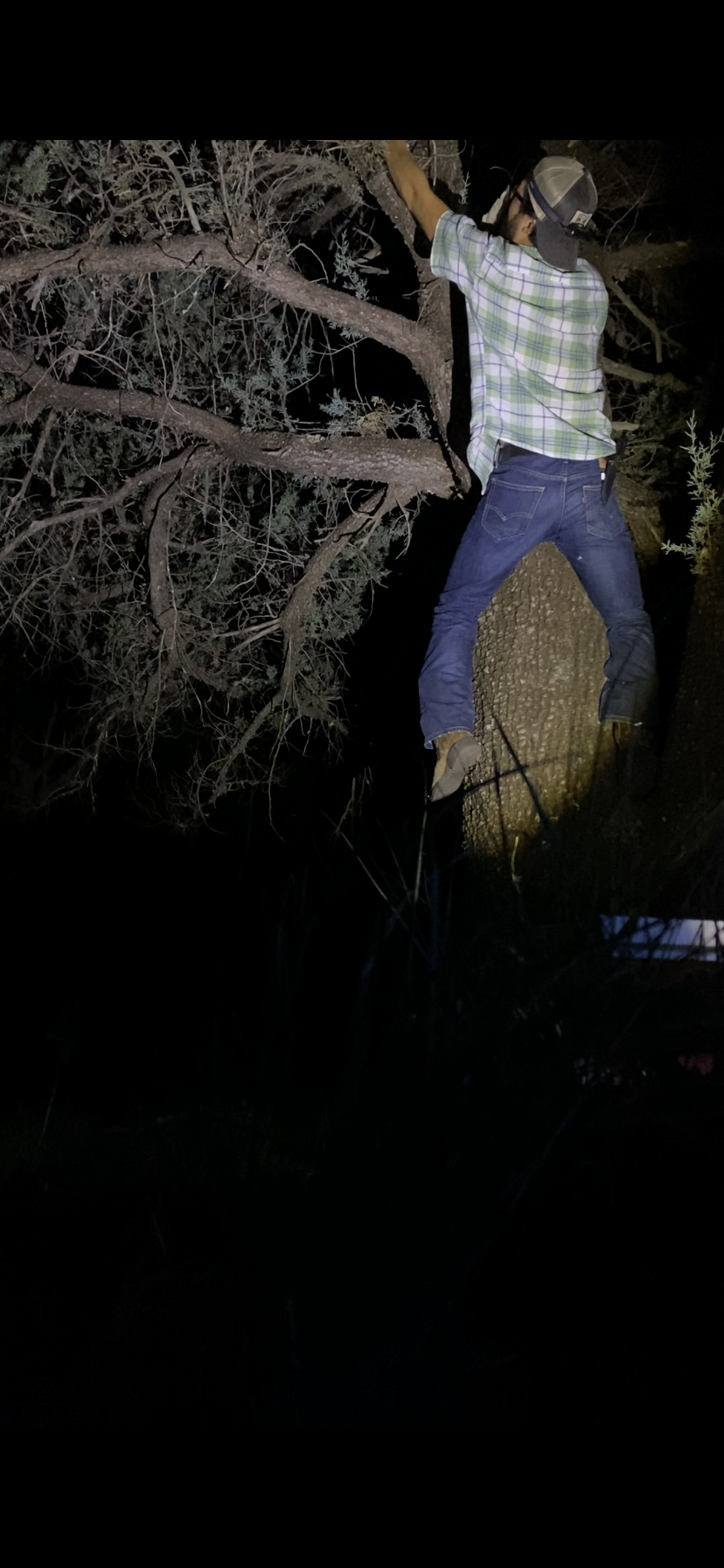
I am climbing on the tree to get the first D. grantii.
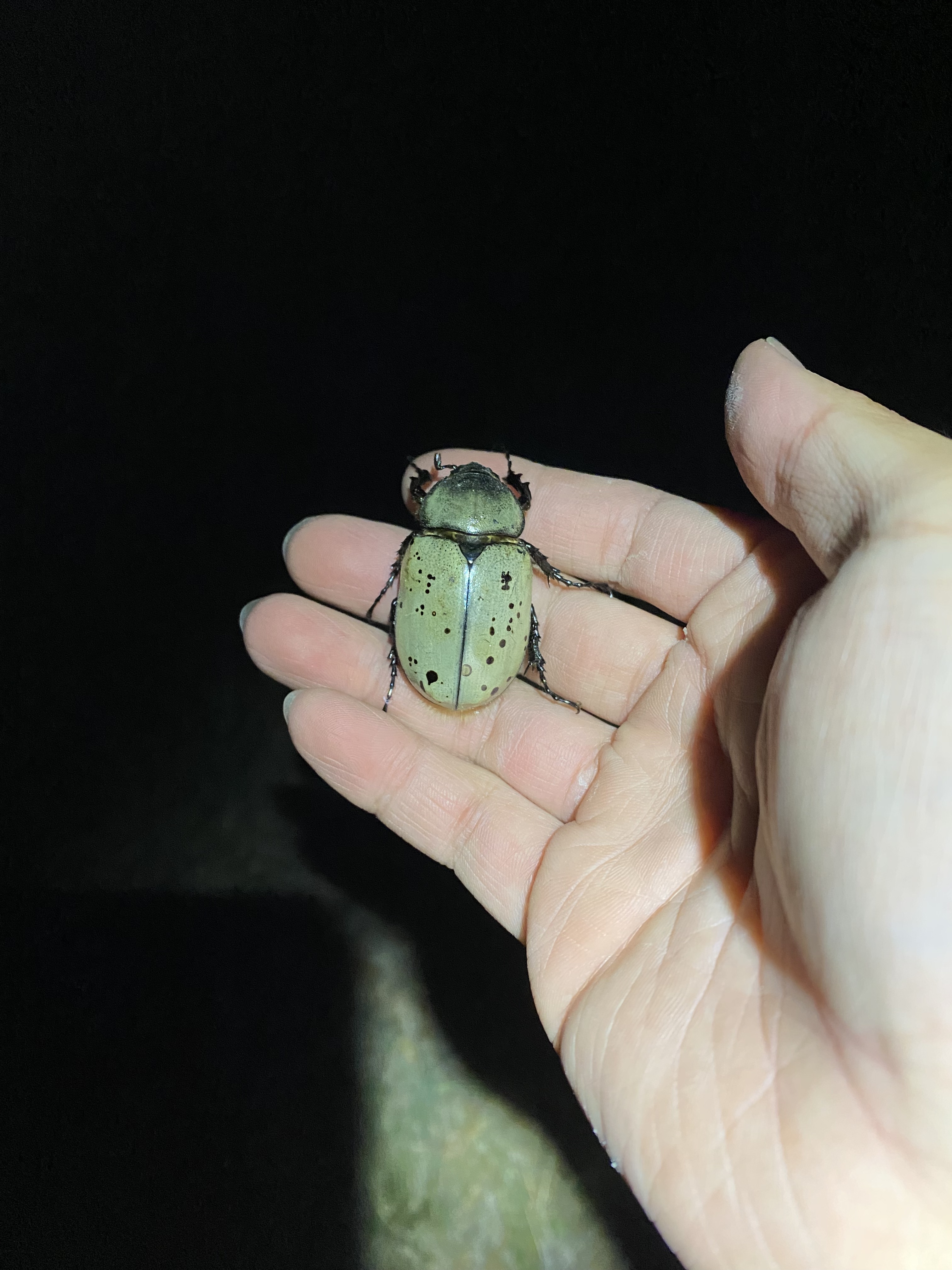
The first wild female D. grantii in my life!
The second Sky Island I visited was Santa Rita mountain. I camped at Madera Canyon and did light-sheeting there. My goal was to get at least three individuals from each population. While I was there, I met some people who were interested in what I was doing. I introduced myself and explained my research, and they stuck around to see what kind of creatures would visit us at night. One of the guys I met was a pro photographer, Chris from Pennsylvania. He took some amazing pictures and was more interested in moths and herps. (Chris's flicker) He also took some pictures of D. grantii for me. We didn’t exchange contact info, but somehow he found my email and reached out after I got back. There was a 10 PM curfew, and I was struggling to find the last individual I needed. While I was packing up, I shut down the mercury vapor light but left the blacklight on. Then, I heard a hard object hit the ground. it was another female that had landed. So I’d say it turned out to be a good night.
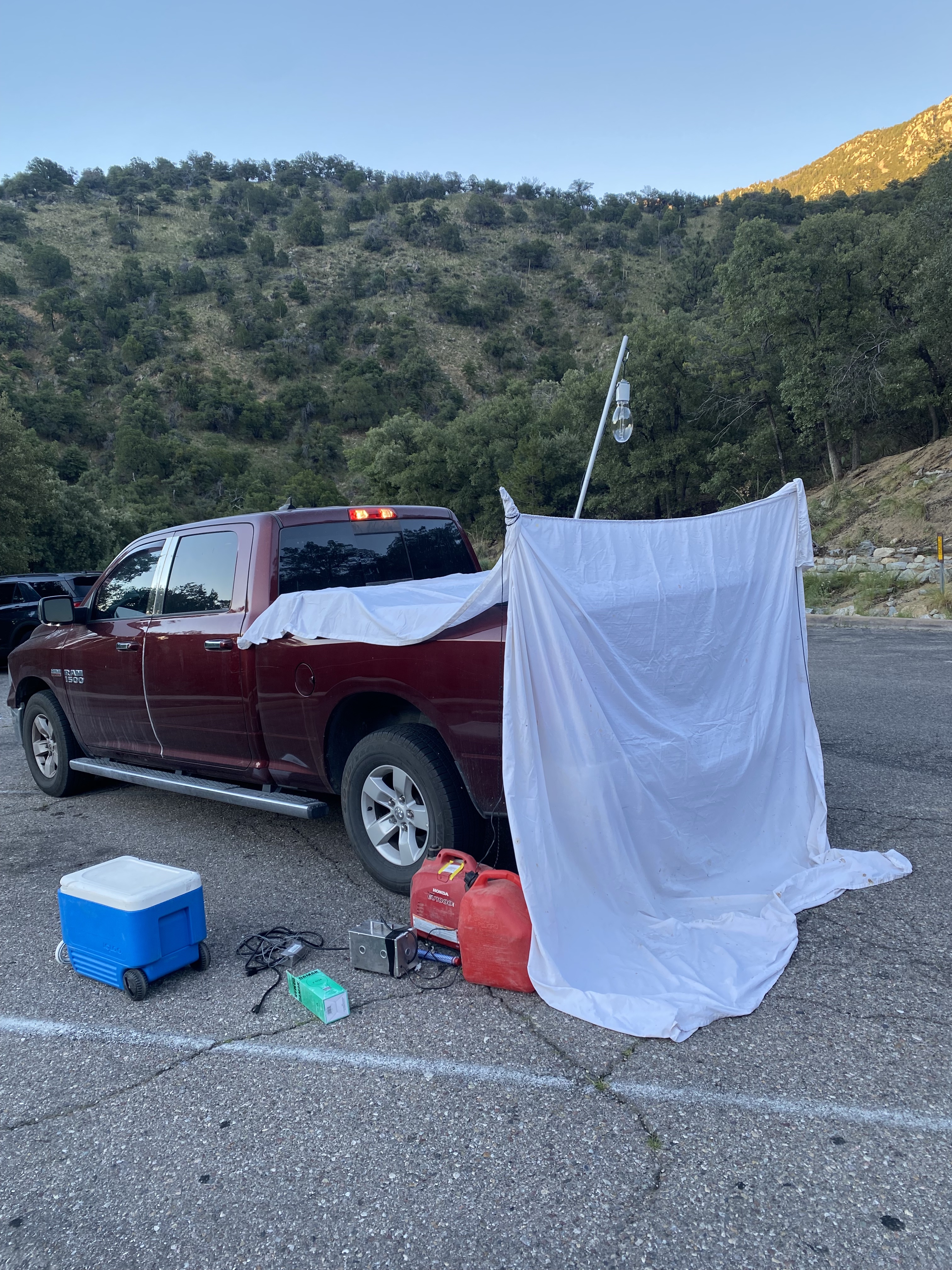
I cannot find trees to set up lightsheet so I used my truck.
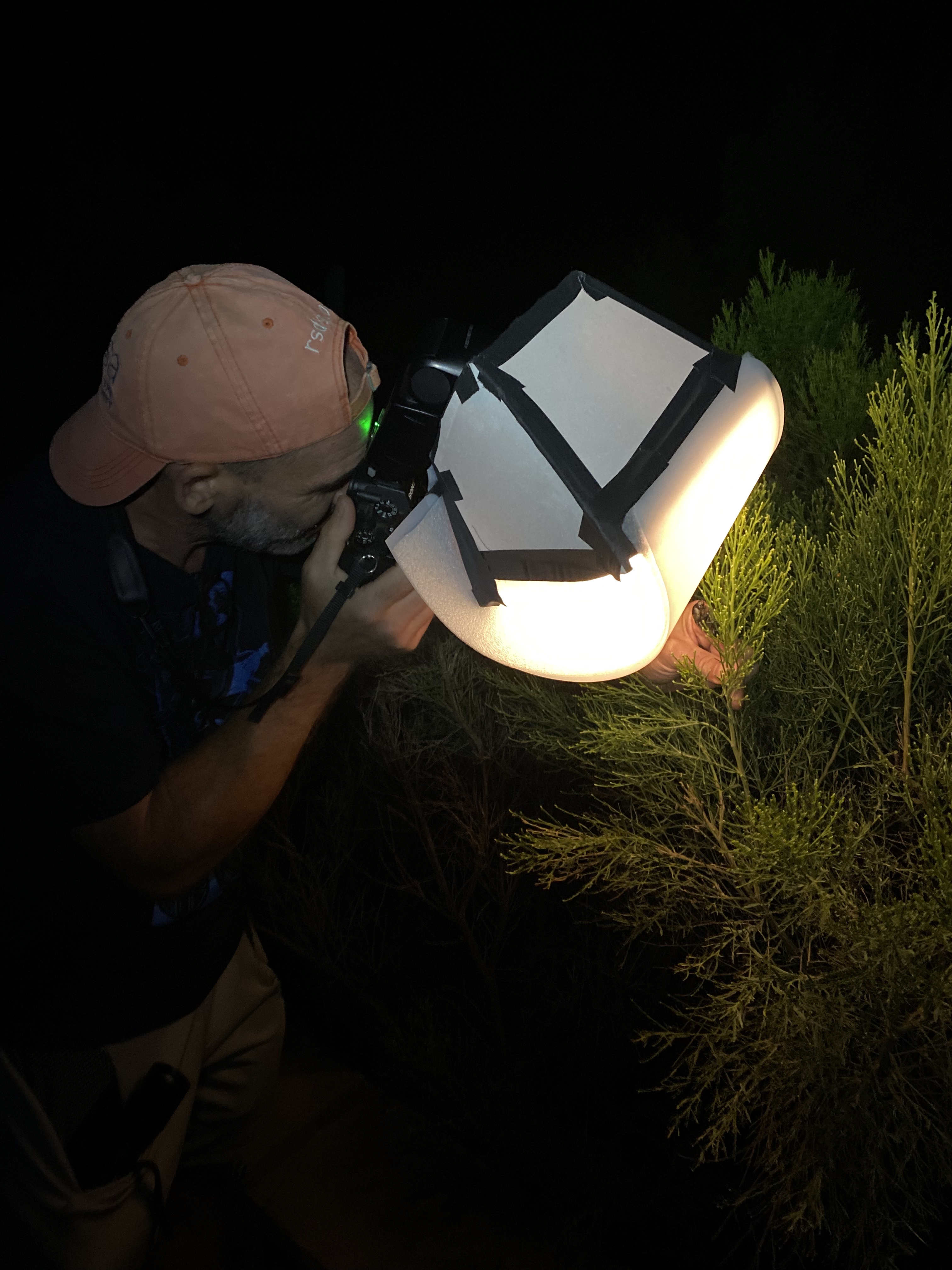
Chris is taking pictures for D. grantii. You can tell that is very pro-level with those equipments.
The last Sky Island I sampled was Mt. Lemmon. The first night was rough. I only got one. So on the second night, I moved to a different location where I thought I might have better luck. The night started very slow, and I almost gave up. I was just walking around when I found a female crawling nearby. I was really excited because it was the last night, and I would head back to Texas the next morning. I told myself it wasn’t a bad trip—at least I caught some D. grantii.
So far, all the D. grantii I had caught were females. I hadn’t seen any males yet. One of the most attractive features of D. grantii is the characteristic big horns the males have. Then, it happened again—while I was packing and turning off the mercury vapor light, a male flew down onto the folded sheet. This was the first wild male, and the only male, I caught on this trip. I slept with a smile that night, and the next morning, I headed back to Texas and returned to civilization.
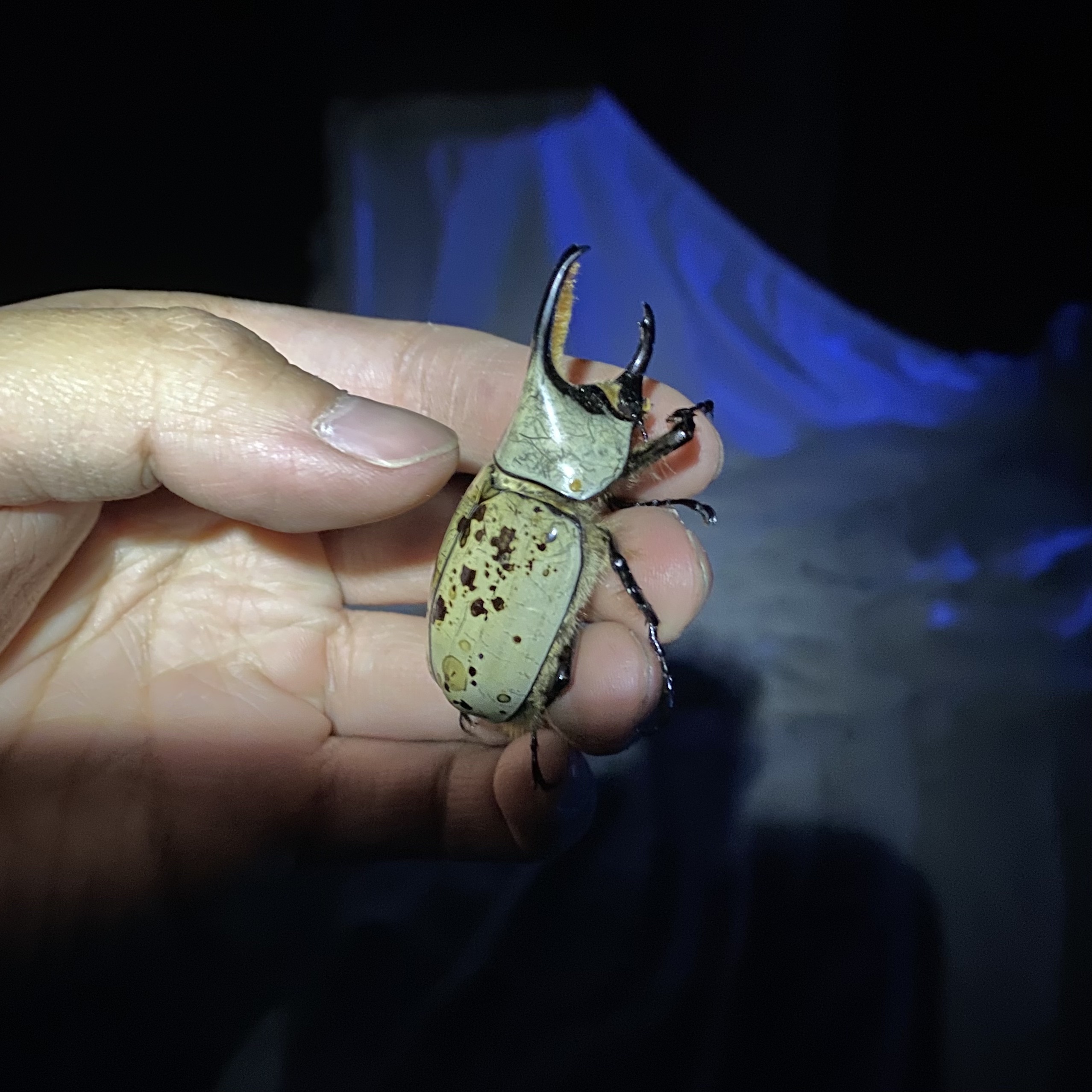
First and only male D. grantii
During the trip, I mostly did dispersed camping in primitive areas. Only during the daytime or while on the move would I get some signal to go online and grab a Sonic double cheeseburger. Other than that, I usually cooked hotdogs, potatoes, and beans for meals and worked on my Evolution class homework.
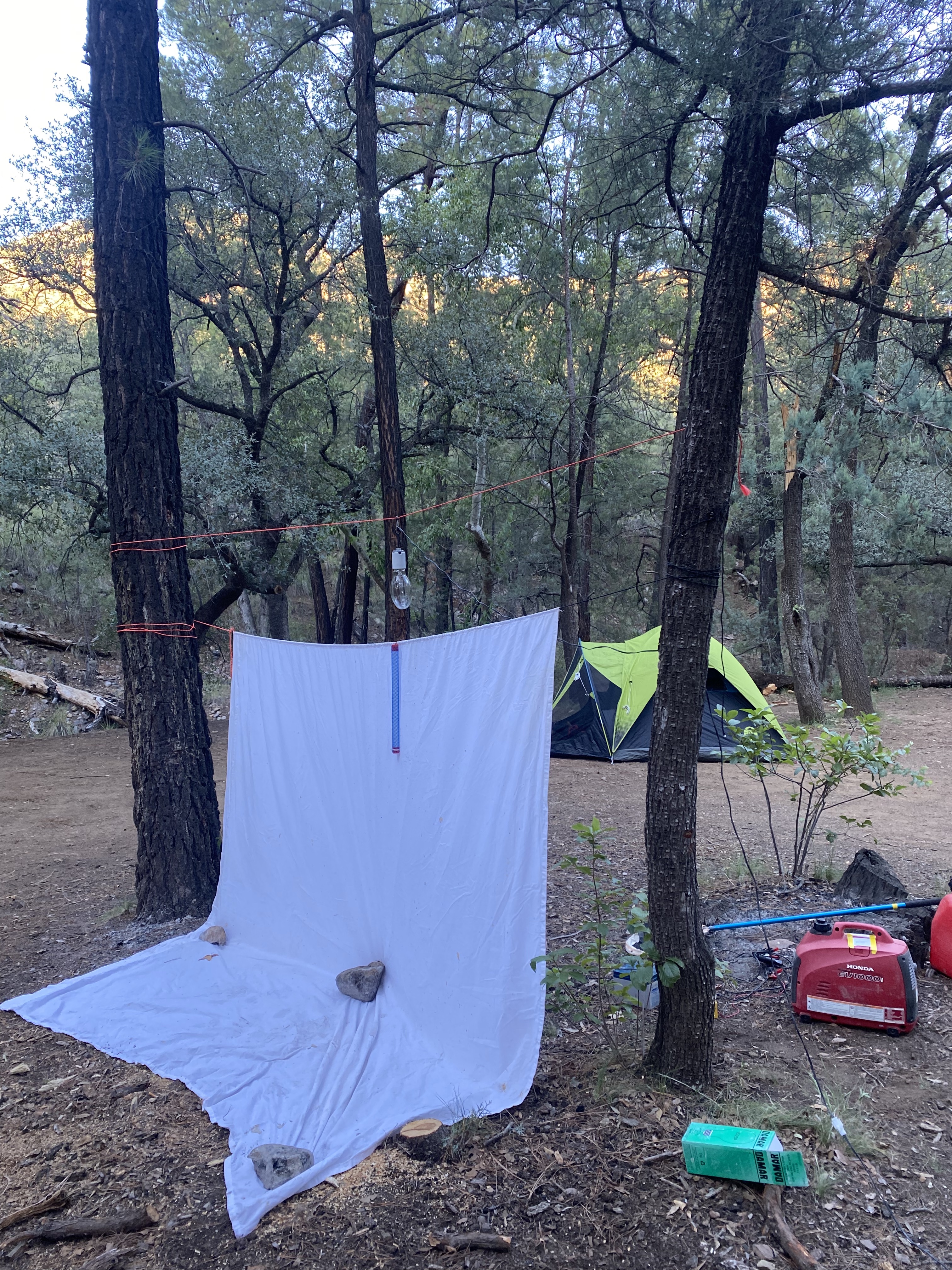
My usual setup
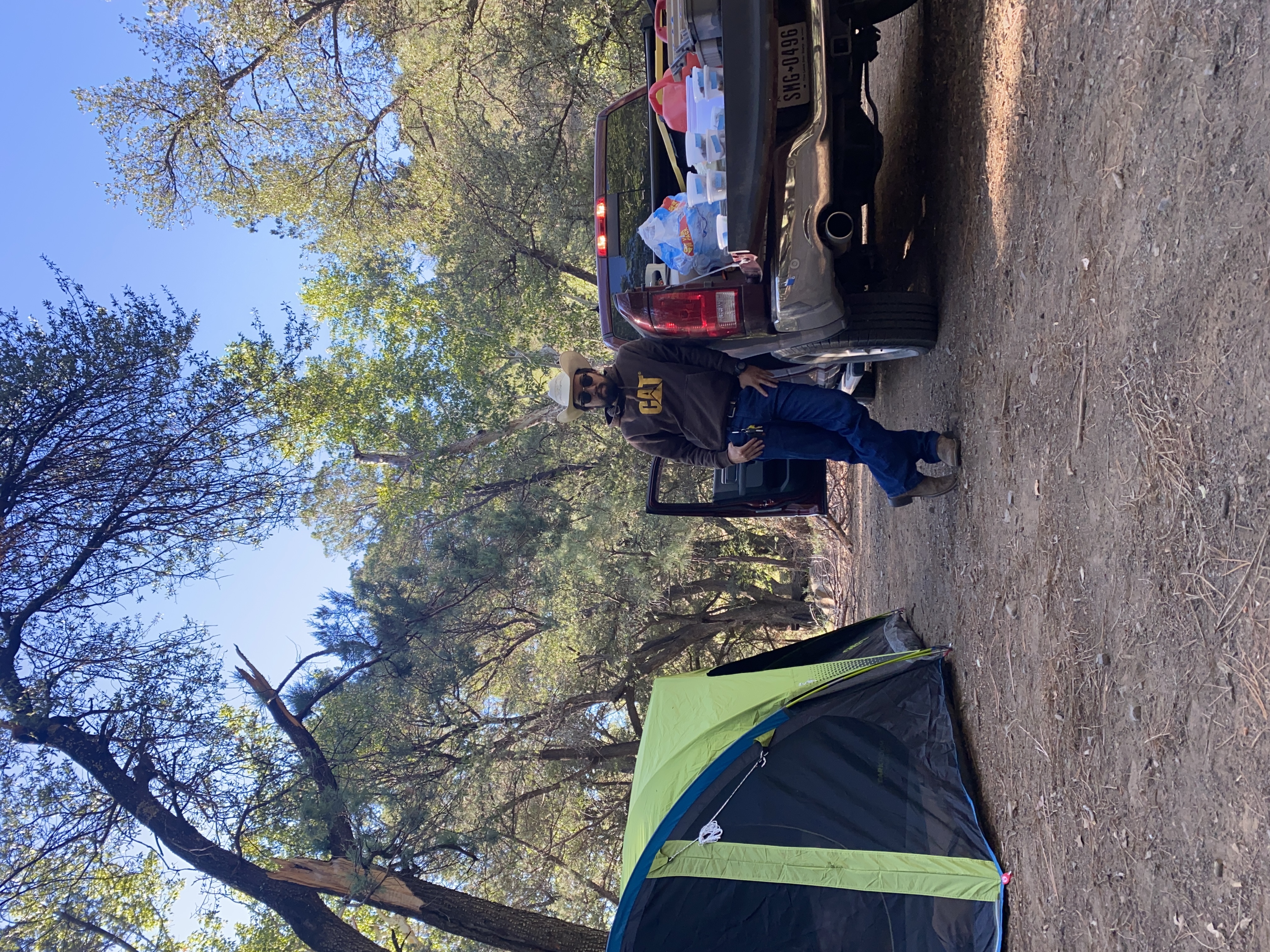
Just a beetle wrangler all the way from Texas!
Sean Chien
Ph.D. student | Evolutionary Biologist | Beetle Enthusiant